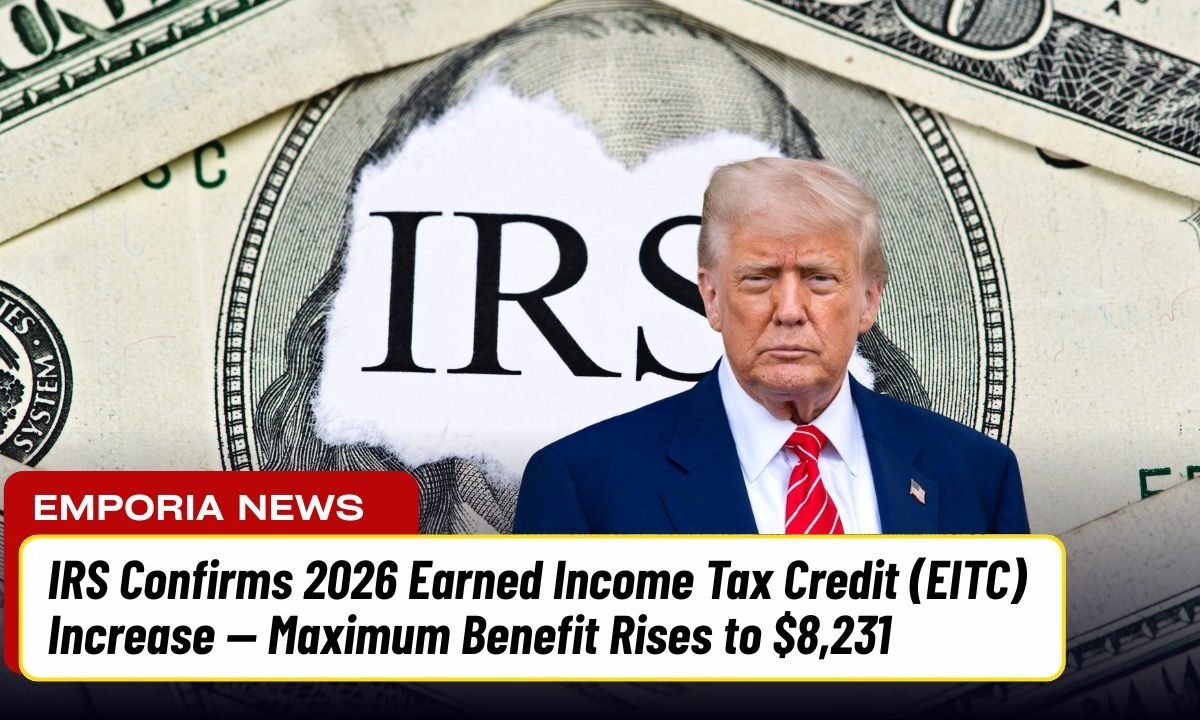The Internal Revenue Service (IRS) has officially announced its annual inflation adjustments for more than 60 tax provisions affecting the 2026 tax year, with filing season beginning early next year.
The latest updates—detailed in Revenue Procedure 2025, released on October 9, 2025—introduce several moderate but meaningful changes aimed at aligning tax parameters with the rising cost of living.
Among these, the highlight is a notable increase in the Earned Income Tax Credit (EITC), a key refundable tax benefit that assists low and moderate-income working families nationwide.
Eligible taxpayers could now receive refunds up to $8,231 for households with three or more qualifying children, showcasing the EITC’s ongoing role in promoting financial stability during inflationary times.
Why the EITC Is Crucial for Working Families
The Earned Income Tax Credit (EITC) was designed to encourage employment while providing direct financial support.
As a fully refundable credit, it ensures recipients can claim the entire credit amount even if they owe no federal income tax.
The IRS estimates that roughly 28 million households benefit from this program each year. However, about one in five eligible Americans still miss out—often because of lack of awareness or difficulty navigating the application process.
The EITC’s refundability is its greatest strength: taxpayers can receive the full credit as cash, even with a zero tax liability. It applies to diverse forms of employment—from hourly wage earners to freelancers—making it one of the most inclusive federal support systems available.
Unfortunately, nearly 20% of qualified workers still fail to claim the benefit, largely due to the program’s complex eligibility rules.
EITC Eligibility and Income Limits for 2026
Eligibility depends on adjusted gross income (AGI), filing status, and the number of qualifying children. Children generally must be under 19, or under 24 if enrolled as full-time students.
For childless workers, eligibility applies to individuals aged 25 to 64. Additionally, investment income must remain below $12,200, or the credit is forfeited.
The phase-out range—where benefits gradually reduce—varies by filing status and number of dependents:
| Number of Qualifying Children | Full Phase-Out (Married Filing Jointly) | Full Phase-Out (Single / Head of Household / Qualifying Surviving Spouse) |
|---|---|---|
| None | $26,820 | $19,540 |
| One | $58,863 | $51,593 |
| Two | $65,899 | $58,629 |
| Three or More | $70,244 | $62,974 |
For example, phase-out begins at $18,140 for joint filers without children and $10,860 for single filers. To simplify calculations, the IRS provides an EITC Assistant Tool online—helping taxpayers determine eligibility and credit amounts with ease.
Broader Tax Relief and Related Adjustments
The 2026 EITC adjustments align with provisions under the new “One, Big, Beautiful Bill”—a legislative package expanding family-focused tax benefits.
Alongside the EITC increase, taxpayers will notice modest boosts in the standard deduction and income tax bracket thresholds, providing mild relief to middle-income earners facing ongoing inflation pressures.
For many families juggling childcare expenses, part-time work, and rising living costs, these adjustments can lead to meaningful financial relief.
Tax professionals advise filers not to overlook available credits, emphasizing the Volunteer Income Tax Assistance (VITA) program, which offers free guidance to eligible taxpayers.
Despite its complexity, the IRS tax code remains an essential tool for economic support—a buffer helping millions withstand inflation’s impact.
For comprehensive details, taxpayers can visit IRS.gov and review the full Revenue Procedure 2025 documentation.
The IRS’s 2026 inflation adjustments reaffirm its commitment to adapting tax policies to reflect real-world economic challenges.
The EITC increase to $8,231 provides vital relief to working families, ensuring fairer financial outcomes amid rising living costs.
For those eligible, claiming the EITC remains one of the most impactful ways to boost annual refunds and support household stability.




